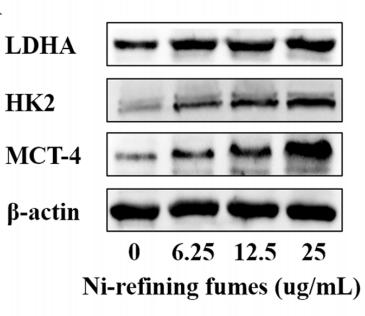SLC16A3 Antibody - #AF5253
| Product: | SLC16A3 Antibody |
| Catalog: | AF5253 |
| Description: | Rabbit polyclonal antibody to SLC16A3 |
| Application: | WB IF/ICC |
| Reactivity: | Human, Mouse, Rat |
| Prediction: | Pig, Bovine, Horse, Sheep, Rabbit, Dog, Chicken, Xenopus |
| Mol.Wt.: | 47 kDa; 49kD(Calculated). |
| Uniprot: | O15427 |
| RRID: | AB_2837739 |
Related Downloads
Protocols
Product Info
*The optimal dilutions should be determined by the end user.
*Tips:
WB: For western blot detection of denatured protein samples. IHC: For immunohistochemical detection of paraffin sections (IHC-p) or frozen sections (IHC-f) of tissue samples. IF/ICC: For immunofluorescence detection of cell samples. ELISA(peptide): For ELISA detection of antigenic peptide.
Cite Format: Affinity Biosciences Cat# AF5253, RRID:AB_2837739.
Fold/Unfold
MCT 4; MCT3; MCT4; Monocarboxylate transporter 3; Monocarboxylate transporter 4; MOT4_HUMAN; SLC16A3; Solute carrier family 16 member 3;
Immunogens
- O15427 MOT4_HUMAN:
- Protein BLAST With
- NCBI/
- ExPASy/
- Uniprot
MGGAVVDEGPTGVKAPDGGWGWAVLFGCFVITGFSYAFPKAVSVFFKELIQEFGIGYSDTAWISSILLAMLYGTGPLCSVCVNRFGCRPVMLVGGLFASLGMVAASFCRSIIQVYLTTGVITGLGLALNFQPSLIMLNRYFSKRRPMANGLAAAGSPVFLCALSPLGQLLQDRYGWRGGFLILGGLLLNCCVCAALMRPLVVTAQPGSGPPRPSRRLLDLSVFRDRGFVLYAVAASVMVLGLFVPPVFVVSYAKDLGVPDTKAAFLLTILGFIDIFARPAAGFVAGLGKVRPYSVYLFSFSMFFNGLADLAGSTAGDYGGLVVFCIFFGISYGMVGALQFEVLMAIVGTHKFSSAIGLVLLMEAVAVLVGPPSGGKLLDATHVYMYVFILAGAEVLTSSLILLLGNFFCIRKKPKEPQPEVAAAEEEKLHKPPADSGVDLREVEHFLKAEPEKNGEVVHTPETSV
Predictions
Score>80(red) has high confidence and is suggested to be used for WB detection. *The prediction model is mainly based on the alignment of immunogen sequences, the results are for reference only, not as the basis of quality assurance.
High(score>80) Medium(80>score>50) Low(score<50) No confidence
PTMs - O15427 As Substrate
| Site | PTM Type | Enzyme | Source |
|---|---|---|---|
| S35 | Phosphorylation | Uniprot | |
| Y36 | Phosphorylation | Uniprot | |
| K254 | Sumoylation | Uniprot | |
| K262 | Sumoylation | Uniprot | |
| K415 | Ubiquitination | Uniprot | |
| K428 | Ubiquitination | Uniprot | |
| K431 | Ubiquitination | Uniprot | |
| S436 | Phosphorylation | Uniprot | |
| K448 | Sumoylation | Uniprot | |
| K448 | Ubiquitination | Uniprot | |
| K453 | Ubiquitination | Uniprot | |
| T460 | Phosphorylation | Uniprot | |
| T463 | Phosphorylation | Uniprot | |
| S464 | Phosphorylation | Uniprot |
Research Backgrounds
Proton-linked monocarboxylate transporter. Catalyzes the rapid transport across the plasma membrane of many monocarboxylates such as lactate, pyruvate, branched-chain oxo acids derived from leucine, valine and isoleucine, and the ketone bodies acetoacetate, beta-hydroxybutyrate and acetate (By similarity).
Cell membrane>Multi-pass membrane protein.
Highly expressed in skeletal muscle.
Belongs to the major facilitator superfamily. Monocarboxylate porter (TC 2.A.1.13) family.
Research Fields
· Human Diseases > Cancers: Overview > Central carbon metabolism in cancer. (View pathway)
References
Application: WB Species: human Sample: Beas-2B cells
Restrictive clause
Affinity Biosciences tests all products strictly. Citations are provided as a resource for additional applications that have not been validated by Affinity Biosciences. Please choose the appropriate format for each application and consult Materials and Methods sections for additional details about the use of any product in these publications.
For Research Use Only.
Not for use in diagnostic or therapeutic procedures. Not for resale. Not for distribution without written consent. Affinity Biosciences will not be held responsible for patent infringement or other violations that may occur with the use of our products. Affinity Biosciences, Affinity Biosciences Logo and all other trademarks are the property of Affinity Biosciences LTD.

